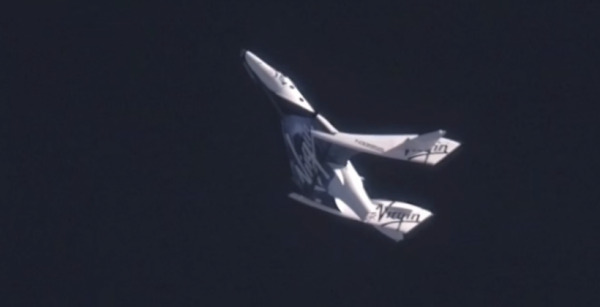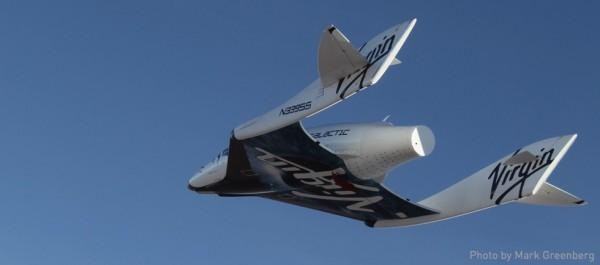Virgin Galactic Pilot Speaks Amid Tech Woe Whispers
Concerns have been raised about Virgin Galactic's safety and the pace at which development was driven, in the aftermath of the SpaceShipTwo crash which killed one pilot and left the other dependent on his automatic parachute deployment to survive. Richard Branson's ambitious space tourism scheme has been in disarray for several years, insiders claim, with secret technical issues at odds with the public roadmap for commercial flight. Meanwhile, pilot Peter Siebold told the National Transportation Safety Board that he was unaware that his copilot had unlocked the aerodynamic elements of SpaceShipTwo, believed to have been instrumental to the crash taking place.
Siebold was air-lifted to hospital after the crash on October 31st in the Mojave desert, and spoke to the NTSB investigators on November 7th.
He was unaware that copilot Michael Alsbury had unlocked the so-called "feathering system" which SpaceShipTwo uses as an air-brake during the initial stages of descent. The NTSB has already fingered the feathers as the likely culprit for the craft's demise, with telemetry showing the system had been unlocked ahead of schedule.
Deployed correctly, the feathers rise up from the rear of SpaceShipTwo and help redirect the flow of air, so that the nose does not point down or lose stability. Usually, two controls are required to be activated for them to operate: a locking system, and then a second lever that moves them into position.

Alsbury unlocked the feathering system at around Mach 1, however, rather than at approximately Mach 1.4 as was the plan.
Not equipped with a suit to withstand the minus 70 degree Fahrenheit temperatures and gusting winds in the region of 600 mph, Siebold also did not have an individual oxygen supply. Instead, he somehow managed to unbuckle himself from his seat after SpaceShipTwo's cockpit broke up around him, with his parachute automatically releasing.
While the NTSB investigation is still underway, that hasn't stopped whispers from Virgin Galactic's past suggesting internal problems were already an issue. Engineers and a former government official speaking on the condition of anonymity to the WSJ claim that the space flight company's various public commitments to launch were completely out of sync with the actual status of development internally.

For instance, ongoing concerns among engineers about the fuel source and rocket strength were ignored, it's claimed, with management said to have refused to listen to what was raised. Insufficient thrust from the engine was being troubleshooted by engineers at the same time as Virgin Galactic was publicly committing to starting initial flights with founder Richard Branson onboard less than twelve months hence.
Matters of final spaceship weight, how many passengers it would carry, and what sort of thrust was actually needed were all still undecided, even as Virgin Galactic switched to a new fuel source to try to eke extra strength from the engines.
Virgin Galactic sets its own teams and those of contractors "internal milestones, such as schedule estimates and goals, but the companies are driven by safety and the completion of the flight test program before moving into commercial service," the company said in a statement, and insisted that any scheduling decisions had "never impacted flight safety."
Previously, a number of ticket holders opted for a refund rather than wait to take their flights, though Branson himself remains defiantly committed to going up with his family in tow.
